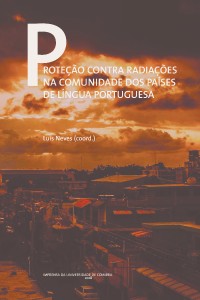Please use this identifier to cite or link to this item:
https://hdl.handle.net/10316.2/44468| Title: | Quantification of Potassium-40 in soils from São Paulo state conservation units, Brazil | Other Titles: | Quantificação de Potássio-40 em solos de unidades de conservação do estado de São Paulo, Brasil | Authors: | Miranda, M. V. F. E. S. Farias, E. E. G. Cantinha, R. S. França, E. J. |
Keywords: | radionuclides;tracer;Cerrado;Atlantic Forest;Dense Ombrophilous Forest;40K;radionuclídeos;traçador;Cerrado;Mata Atlântica;Floresta Ombrófila Densa;40K | Issue Date: | 2018 | Publisher: | Imprensa da Universidade de Coimbra | Journal: | http://hdl.handle.net/10316.2/44443 | Abstract: | Soil is the main reservoir of chemical substances for vegetation, however little is known about the distribution of natural radionuclides in well preserved areas such as conservation units. Among the radionuclides, 40K can be an interesting tracer of the nutrient potassium, besides it can be useful to check mineral cycling of ecosystems. In this work the activity concentration of 40K was determined in soils of two conservation units corresponding to Cerrado and Atlantic Forest biomes, located in São Paulo State, Brazil. Soil samples were collected under crown projection of the most abundant trees species of long-term plots installed within the EstaçãoEcológica de Assis (Cerrado type biome) and Parque Estadual Carlos Botelho (Atlantic Forest biome). Samples were oven-dried and milled in a porcelain mortar. The radioactivity present in test portions was measured using an HPGe detector from Canberra. Results of 40K were lower than 77 Bq kg-1for Cerrado soils, while, for the Atlantic Forest, results were in the range of 760 Bq kg-1 to 1440 Bq kg-1. Such difference could be explained by the degree of soil development, since most part of Atlantic Forest soils are inceptisol, that is, soils with the typical presence of parent material from rock weathering. Besides, it can be assumed that potassium in soil can be limiting for Cerrado ecosystems. O solo é o principal reservatório de substâncias químicas para a vegetação, contudo, pouco se conhece sobre a distribuição natural dos radionuclídeos em áreas bem preservadas, tais como as unidades de conservação. Entre os radionucídeos, 40K pode ser um traçador de interesse para o nutriente potássio, também útil na monitoração da ciclagem mineral nos ecossistemas. Neste trabalho, a concentração da atividade do 40K foi determinada em solos de duas unidades de conservação dos biomas Cerrado e Mata Atlântica, localizados no estado de São Paulo, Brasil. As amostras de solo foram coletadas sob a projeção da copa das espécies de árvores mais abundantes de parcelas instaladas há longo tempo na Estação Ecológica de Assis (Bioma Cerrado) e no Parque Estadual Carlos Botelho (Bioma Mata Atlantica). As amostras foram secas em forno e cominuídas em almofariz de porcelana. A radioatividade presente nas porções-teste foi medida em um detector HPGe da Canberra. Os resultados do 40K mostraram uma |
URI: | https://hdl.handle.net/10316.2/44468 | ISBN: | 978-989-26-1602-5 (PDF) 978-989-26-1601-8 |
DOI: | 10.14195/978-989-26-1602-5_24 | Rights: | open access |
| Appears in Collections: | Proteção contra radiações na comunidade dos países de língua portuguesa |
Files in This Item:
| File | Description | Size | Format | |
|---|---|---|---|---|
| quantification_of_potassium-40.pdf | 253.1 kB | Adobe PDF |  |
Items in DSpace are protected by copyright, with all rights reserved, unless otherwise indicated.
